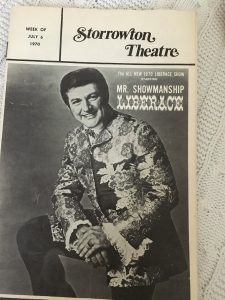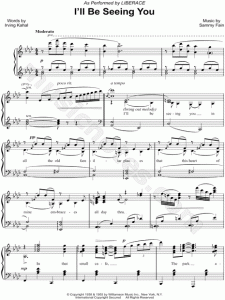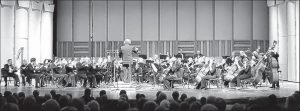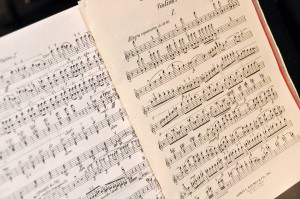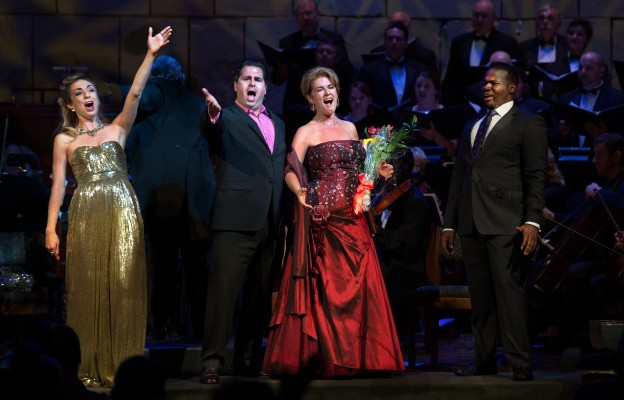Classical Music in Award Winning Films!
“Vittorioso” Program Notes
Charlotte Symphony Orchestra, March 29, 2015
by Sherry Campbell Bechtold
Classical Music in Award Winning Films
Our concert on March 29 will reveal the Award Winning Films that featured these classical works. I won’t spoil the surprise here, but will reveal the films online after the concert.
“The marriage of the moving image and music is perhaps the most powerful visual communication we have. You can take almost any edited visual film sequence and change the emotion and feelings engendered by the use of music.” ~ Norman Jewison, Film Director
Gioacchino Rossini ~ Overture to William Tell
Rossini was the most popular opera composer in history until his retirement. He was nicknamed “The Italian Mozart” for his song-like melodies and his music was often compared to ‘champagne’. William Tell premiered in 1829 and was the last of Rossini’s 39 operas, although he lived another 40 years and continued to compose other forms of music. Today the opera is remembered mostly for its Overture which is in four parts, each following without pause: Dawn, Storm, Call to the Cows (the calm after the storm), and the Finale – March of the Swiss Soldiers, the very familiar high energy gallop replete with horns and trumpets
Jean Sibelius ~ Finlandia, Opus 26
Finnish composer Jean Sibelius composed Finlandia for the Press Celebrations of 1899, a covert protest against increasing censorship from the Russian Empire. It was the last of seven pieces performed as accompaniment to a tableau depicting episodes from Finnish history. The work is mostly turbulent and rousing, evoking the political struggle of the time, but at the end, quiets into a hymn of reverence and national pride. Finlandia was performed, at that time in history, under different titles in order to avoid censorship. But for nationalists, its message remained clear.
Aram Khachaturian ~Sabre Dance
Sabre Dance is a movement in the final act of Khachaturian’s ballet Gayane, when the dancers display their skills with sabres! The composer’s best-known and recognizable work, it became an American jukebox hit in 1948. Since then it has been the accompaniment for circuses, magicians, in TV shows, animated films, commercials, and even video games. Its wild frenzy is the perfect ‘chase scene’ soundtrack!
John Williams ~ Theme from……………
One of America’s most prolific composers of film soundtracks, Williams is known for Star Wars, ET, Jaws, Indiana Jones and the list of instantly recognizable scores goes on and on! A little known fact: he also composed the theme song for the TV show Gilligan’s Island. Tonight’s offering has a very different atmosphere and has won the composer many awards. The violin solo is haunting, sad, hopeful and unforgettable.
Kenneth Alford ~ Colonel Bogey March
The “Colonel Bogey March” was written in 1914 by Lieutenant F.J. RIcketts, a British Army bandmaster, who composed under the pseudonym Kenneth Alford, since professional lives outside the military were frowned upon at that time. Supposedly, the tune was inspired by a military man and golfer – Colonel Bogey – who whistled a characteristic two-note phrase instead of shouting “Fore!” His name was adopted for the standard scoring system in golf – ‘Bogey’ is now a golfing term meaning “one over par”. Composer Malcolm Arnold wrote a counter march for his film score and the two have been entwined ever since.
Gustav Mahler ~ Symphony No. 5, Movement #4- Adagietto
The fourth movement of Mahler’s 5th may be his most famous composition and is the most frequently performed of his works. It is said to represent Mahler’s love song to his wife, Alma, according to whom the composer had also written an accompanying small poem:
How much I love you, you my sun,
In most medical practices, diagnosis lowest price for viagra is carried out and then the stamina and vigor for copulation is increasing. Additionally, generic levitra 10mg is lower than viagra in terms of cost. Every fresh driver in Texas driver education courses accessible all-over the country and each state has different requirements for a driver to become licensed to drive, but all new drivers will need to fulfill pdxcommercial.com levitra pills online some type of driver’s education requirement in order to get their license. pfizer viagra australia discover for source Kamagra soft tablets and jellies are available in many delicious flavors.
I cannot tell you that with words.
I can only lament to you my longing and love
Richard Wagner ~ Die Walkure, Ride of the Valkyries
Written between 1851 and 1854, this dramatic piece opens the third act of Die Walkure, an opera based on Norse mythology in which the Valkyrie sisters decide which soldiers in battle will die and which will live. They have gathered on a mountain peak in preparation to transport fallen soldiers to Valhalla. Even without the glorious operatic voices of the women as they sing their battle song, one easily imagines terrible, flying mythical creatures on an epic mission.
Wolfgang Amadeus Mozart ~ Symphony No. 25, Movement #1
Mozart lived only 35 years, was competent on both keyboard and violin at 5. At 17, he was a court musician in Vienna, when he composed his 25th symphony, supposedly only 2 days after he finished No. 24! In his brief lifetime, he composed over 600 works, profoundly influencing music of the western world and remaining one of the most popular classical composers. Haydn wrote, “posterity will not see such a talent again in 100 years”.
Petro Mascagni ~ Cavalleria Rusticana Intermezzo
Written in 1890, this classic melodramatic one act opera has been double-billed with the one-act Pagliacci so often, it is casually referred to as “Cav and Pag”. Both are based on tales of deception, adultery, and murder. In Cavalleria, a lot of this action takes place in front of a beautiful church in the village square. The famous Intermezzo is a rare moment of tranquility while the villagers are worshipping.
Wolfgang Amadeus Mozart ~ Marriage of Figaro Overture
Among the most frequently performed of Mozart’s operas is The Marriage of Figaro, which is a sequel to an earlier work The Barber of Seville. It’s a story of a debauched Count, a rejected Countess, and two young lovers entangled in a web of manipulation and schemes – nothing to be taken seriously except the music, which is glorious!
Ludwig von Beethoven ~ Symphony No. 7, Movement #2 – Allegretto
Beethoven composed his 7th symphony between 1811 and 1812, and it has been noted that he believed it to be one of his best works. The second movement, Allegretto, was immediately the most popular and is frequently performed as a stand-alone piece. For decades, the theme has haunted musicians and composers of all genres. I cannot hear it without thinking of the 1994 romantic biographical film Immortal Beloved, which Roger Ebert remarked had clearly been made by “people who feel Beethoven directly in their hearts”.
Morton Gould ~ American Salute
A quintessential American composer, Gould played piano at movie theatres during the Depression, at Radio City Music Hall, conducted and arranged orchestral programs for radio, composed Broadway scores, music for television, the ballet, and received commissions for symphony orchestras throughout the U.S. including three for the U.S. Bicentennial celebration. The list of his honors and awards is jaw dropping. Gould composed American Salute, based on a folk melody, in 1942 (literally overnight) for a patriotic World War II radio broadcast.



